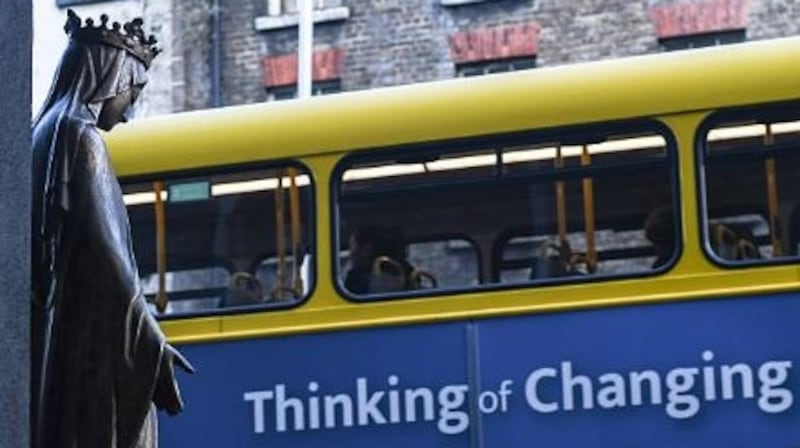A new public transport ticket that will allow commuters take any number of bus, Luas and Dart journeys in a 90-minute period is likely to be priced at about €2.50 under the BusConnects plan.
The National Transport Authority (NTA) has said while the fare hasn't been finalised it will be somewhere between the two most common Dublin bus fares, which are €2.25 and €2.50.
Part of the BusConnects plan includes introducing a 90-minute fare to allow trips between bus, Luas and Dart services and as many journeys as passengers chose during that timeframe.
“A person can commence the last leg of their journey at the 89th minute regardless of how long the final leg will be,” an NTA spokeswoman said.
Under the BusConnects plans, current bus numbers would be replaced by a new lettering system from A to G, indicating seven main routes through the city, with buses running every four to eight minutes on these core routes.
Radial bus routes would be supplemented by frequent orbital services, enabling passengers to switch from one bus to another at no extra charge.
The plan acknowledges some bus users who currently have a direct route into the city centre from where they live would have to change buses to reach their destination but says journey times will be significantly shorter.
AA Roadwatch said in its submission to the NTA last September that it fears the introduction of a 90-minute fare structure will be “too expensive overall”.
The motoring organisation said it is important consideration is given to how an interchange system and customer experience “will feel in the middle of an Irish winter”.
AA Roadwatch said Dublin’s standard of public transport would not be considered acceptable in comparable European cities.

Existing public transport has suffered from "chronic under-investment" for many years and light and heavy rail systems serve only selected routes and suburbs with "large gaps in their catchment areas", such as Tallaght, Finglas and Dublin Airport.
"Dublin Bus has been obliged to fill the gaps ... Despite consistent underfunding it has been the work-horse of Dublin transport for generations," it said.
AA Roadwatch said the BusConnects redesign is a “welcome and necessary attempt to solve a long-standing problem” that has turned some away from using public transport.
However, concerns from AA Roadwatch members, motorists and commuters included fares and costs, the removal of some direct routes and the requirement to make one or more connections, it said.
“In some cases moderate walks are required to connect from one bus to the next. This may not be a problem for many users but it will nonetheless feel like a diminution of the service rather than an enhancement. It will tend to mitigate against people choosing the bus.”
“Similar interchange models have worked in other cities across the world but it is important to consider how this could negatively impact on older bus users and those with mobility issues, or how such an interchange system and the customer experience will feel in the middle of an Irish winter.”
Some 30,000 submissions were received by the NTA in relation to the redesign of the bus network when public consultation closed at the end of September. A revised network is due to be published in early 2019 when a further round of public consultation will begin. The new network is expected to be rolled out in 2020.
Aside from a redesign of the network, the BusConnects project involves upgrading 16 core bus and cycle lanes into the city. Details of the first four proposed corridors were released by the NTA in November.










